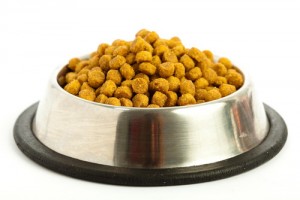Grain Mites Infest Older, Moldy Packaged or Bulk Foods
By Chris Williams on February 9, 2013.
Question
My mother recently had an infestation of grain mites in her pantry that was a real mess to get rid of. Now I’m paranoid that I might have grain mites, too. How can I tell?
Answer
First of all, unless you have some concrete evidence, it’s unlikely that you have grain mites. Grain mites, and other types of food mites, are more common in bulk food storage facilities like grain bins, warehouses, and bakeries. But they can sometimes be pests in home kitchens—if the conditions are right.
Mites require a relative humidity greater than 55% (between 75% and 85% is ideal). As you can imagine, they are more likely to become pests in our area during our more humid summers. Because of this humidity requirement, they are also more likely to be pests on foods (like dry pet food) that are stored in garages, basements, or crawlspaces. But, if your kitchen or pantry is fairly humid, and if you have some foods on your shelves that have been there for a long time (even if they haven’t been opened), they could be infested with certain pests that feed on stored foods, including food mites. Mites are attracted to moldy foods, but don’t expect to see blue or green mold; many surface molds aren’t visible.
If you really want to ease your mind, you’ll need to check all suspect food packages even if they are still sealed. Start with packages that are the oldest, that may be past their “use by” date. Boxes and bags that have been shoved to the back of the shelf and forgotten are the most likely to be infested with insects or mites. You can go through the exercise of checking these older foods, or just discard them since you probably won’t use them anyway. To check the packages, dump the contents out on a tray or cookie sheet (light-colored is best).
Look for movement
Food mites are almost microscopic. It’s difficult to see an individual mite, but you can see a bunch of mites when they move across a surface. In heavy infestations, the surface of the infested grain or food product seems to be rippling in waves.
Look for light brown powder
The “powder” is made up of live mites, dead mites, shed skins of mites, and mite feces. Look for it in corners, on top of, or underneath packaging.
Look for moisture
Large numbers of mites can cause the infested food material to “sweat.”
Use your nose
Mite-infested food actually has a sweet, minty smell (but a bad taste). The mites themselves also smell minty when crushed.
